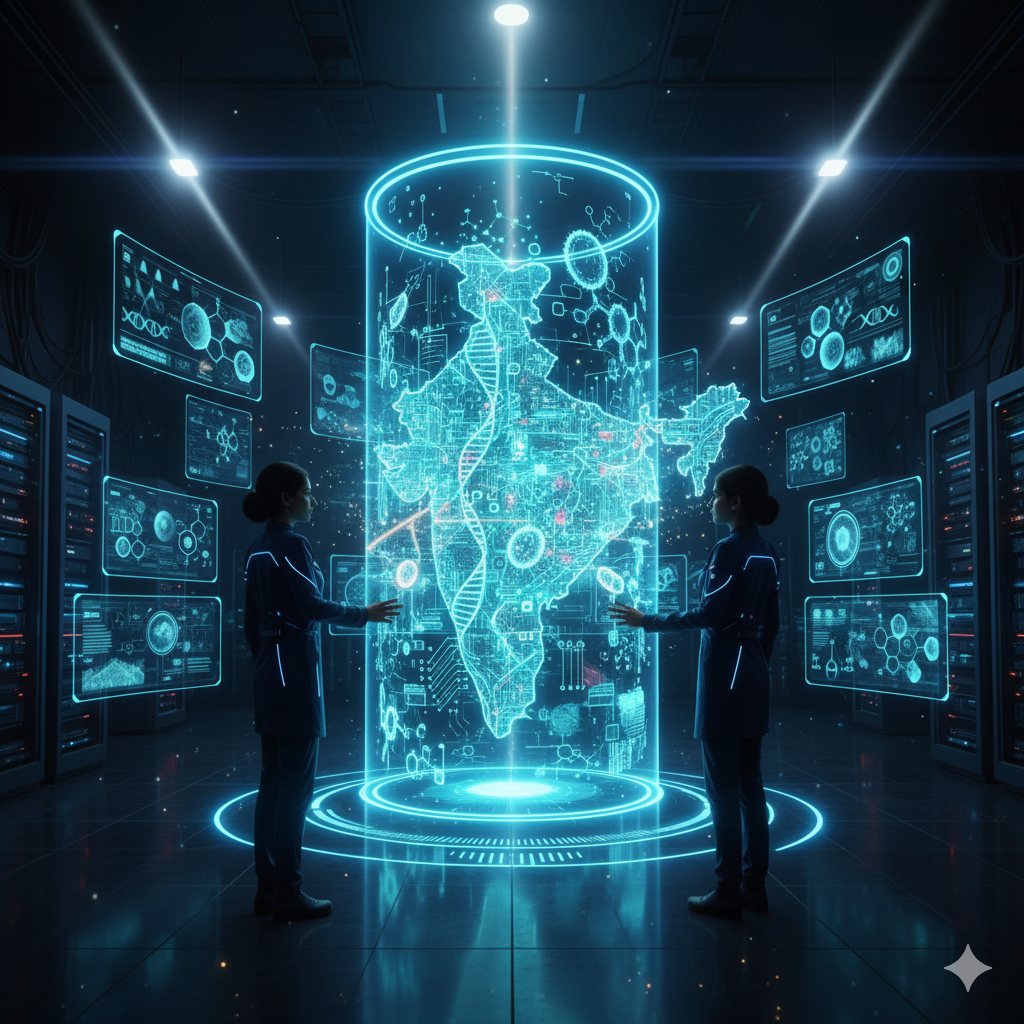Introduction
The 2014 Nobel Prize in Physics was jointly awarded to Isamu Akasaki, Hiroshi Amano, and Shuji Nakamura for their pioneering invention of efficient blue light-emitting diodes (LEDs) in the early 1990s. This invention marked a technological revolution that transformed the world of lighting and electronics. While red and green LEDs had existed for decades, the discovery of blue LEDs completed the triad necessary to produce white light — a breakthrough that has reshaped industries, improved energy efficiency, and enhanced the quality of life across the globe.
Today, from smartphones and televisions to streetlights and hospitals, blue LEDs form the foundation of numerous modern technologies. This essay explores the scientific principles, development process, and far-reaching impacts of blue LEDs on everyday human life, the economy, and the environment.
1. Background: The Quest for Blue Light
1.1 The Early LED Revolution
Light-emitting diodes (LEDs) were first developed in the 1960s, with red and green variants quickly becoming common. These early LEDs were used in calculators, digital clocks, and indicator lights. However, without a blue LED, it was impossible to create white light, which limited their use in general illumination.
1.2 The Challenge of Creating Blue LEDs
Creating a blue LED was particularly difficult because blue light requires a high-energy semiconductor with a large bandgap. Researchers tried various materials for decades, but only gallium nitride (GaN), a compound semiconductor, showed promise. However, GaN was extremely difficult to produce with sufficient crystal quality for commercial use.
1.3 The Breakthrough
In the late 1980s and early 1990s, Isamu Akasaki and Hiroshi Amano at Nagoya University developed high-quality GaN crystals and demonstrated efficient blue light emission. Around the same time, Shuji Nakamura, working at Nichia Corporation, improved upon their methods and created the first commercially viable bright blue LED. This paved the way for white LEDs, achieved by combining blue LEDs with yellow phosphor or by mixing red, green, and blue lights.
2. The Science Behind Blue LEDs
2.1 Working Principle
LEDs are semiconductor devices that emit light when an electric current passes through them. The phenomenon, known as electroluminescence, occurs when electrons recombine with holes in the semiconductor material, releasing energy in the form of photons. The color of light depends on the energy gap (bandgap) of the material.
- Red and green LEDs use materials like gallium arsenide (GaAs) and gallium phosphide (GaP).
- Blue LEDs require a larger bandgap, achieved using gallium nitride (GaN) and indium gallium nitride (InGaN).
2.2 White Light Generation
White LEDs can be produced in two main ways:
- Phosphor Conversion: A blue LED coated with yellow phosphor converts some blue light to yellow, and the mixture appears white.
- RGB Combination: Mixing red, green, and blue LEDs in the right proportion produces white light directly.
This development made solid-state lighting a reality — a technology that consumes less energy, lasts longer, and is more environmentally sustainable than traditional lighting.
3. Everyday Applications of Blue LEDs
3.1 Energy-efficient Lighting
Perhaps the most visible impact of blue LEDs is in lighting technology. White LEDs derived from blue LEDs have replaced incandescent and fluorescent bulbs in homes, offices, and streets. LED bulbs consume up to 85% less energy and last up to 25 times longer than incandescent bulbs, drastically reducing electricity consumption and maintenance costs.
3.2 Display Technology
Blue LEDs are essential in liquid crystal displays (LCDs) and organic LED (OLED) screens. From smartphones, laptops, and TVs to advertising billboards, blue LEDs form the foundation of backlighting systems that produce vivid, energy-efficient visuals.
3.3 Communication and Data Transmission
Blue LEDs also play a role in Li-Fi (Light Fidelity) — a technology that transmits data through visible light instead of radio waves. Blue and white LEDs can flicker at extremely high frequencies, enabling high-speed wireless data communication that’s faster and more secure than Wi-Fi.
3.4 Medical and Healthcare Applications
In the medical field, blue LED technology has enabled:
- Phototherapy for neonatal jaundice treatment.
- Disinfection of medical tools and surfaces using blue-violet LED light with antibacterial properties.
- Dental curing lights that harden resin-based fillings.
LED-based devices are compact, energy-efficient, and have low heat emission, making them ideal for sensitive medical environments.
3.5 Agriculture and Food Industry
LEDs have revolutionized indoor and vertical farming by allowing precise control over light spectra. Blue light, in particular, regulates plant growth, chlorophyll production, and flowering cycles. Farmers can now optimize yields and grow crops year-round, independent of natural sunlight.
3.6 Consumer Electronics
The ubiquitous blue LED is found in:
- Smartphone flashes and sensors
- Optical storage devices like Blu-ray discs (which use blue lasers derived from blue LED technology)
- Gaming consoles and gadgets
These applications demonstrate how the invention has penetrated every layer of modern technology.
3.7 Automotive and Transportation
Blue and white LEDs are now used in vehicle headlights, traffic lights, and instrument panels. They offer higher brightness, longer lifespan, and faster response times than halogen or xenon lamps, enhancing road safety and energy efficiency.
4. Environmental and Economic Impact
4.1 Energy Savings and Sustainability
Lighting accounts for nearly 15% of global electricity consumption. The introduction of white LEDs has dramatically reduced this burden. According to the International Energy Agency (IEA), widespread LED adoption could save hundreds of terawatt-hours of electricity annually and prevent hundreds of millions of tons of CO₂ emissions.
4.2 Reduced Carbon Footprint
Since LEDs require less power and last longer, fewer bulbs are manufactured, transported, and disposed of. This reduces waste generation and carbon emissions across the entire lifecycle — from production to disposal.
4.3 Cost Efficiency
Although initially expensive, LED prices have fallen drastically. Today, LEDs are affordable and accessible, reducing electricity bills and maintenance costs for households and industries alike. This democratization of efficient lighting has improved living standards worldwide, especially in developing countries.
4.4 Rural Electrification and Development
In regions with limited access to electricity, such as rural India and Africa, LEDs powered by solar panels provide reliable and sustainable lighting. This has enabled education after sunset, improved safety, and small-scale economic activities like handicrafts and shops. The invention thus plays a key role in achieving Sustainable Development Goals (SDGs), particularly those related to energy access, education, and poverty reduction.
5. Societal and Cultural Transformations
5.1 Revolutionizing Daily Life
Blue LEDs have quietly transformed how humans experience light. Homes, offices, streets, and entertainment spaces are now illuminated with clearer, cooler, and more controllable light. Smart lighting systems, enabled by LEDs, adjust color and brightness based on mood, activity, or time of day, enhancing both comfort and productivity.
5.2 Urban Aesthetics and Architecture
Architectural and decorative lighting has benefited immensely from LEDs. Dynamic color-changing LED displays illuminate landmarks, bridges, and monuments, adding vibrancy to urban landscapes while consuming minimal power. Cities like Tokyo, Dubai, and New York use LED lighting to create visually stunning skylines.
5.3 Education and Research Expansion
The invention of blue LEDs spurred new research in material science, nanotechnology, and optoelectronics. Universities and industries now explore new semiconductors and quantum dots inspired by GaN technology. The success story of Akasaki, Amano, and Nakamura continues to motivate scientists worldwide.
6. Technological Extensions: Beyond Lighting
6.1 Blue Lasers and Optical Storage
The principles behind blue LEDs led to the development of blue laser diodes, which revolutionized optical storage technologies such as Blu-ray discs. These lasers, with shorter wavelengths than red ones, allow data to be packed more densely, increasing storage capacity significantly.
6.2 Quantum Dots and Next-Generation Displays
Combining blue LEDs with quantum dot technology has produced QLED displays, known for their exceptional brightness, energy efficiency, and color accuracy. These are now standard in high-end televisions and monitors.
6.3 Water and Air Purification
Blue and ultraviolet LEDs are being used for environmental cleaning, including sterilization of air and water. Unlike mercury-based lamps, they are eco-friendly and free from toxic materials, making them ideal for sustainable purification systems.
7. Economic Growth and Global Industry
The global LED industry, valued at over $70 billion, has grown exponentially since the 1990s. The invention of blue LEDs triggered a wave of innovation, generating millions of jobs across sectors — from semiconductor fabrication to lighting design and renewable energy.
Countries like Japan, South Korea, China, and the United States have invested heavily in LED technology, making it a key component of their industrial and export strategies. Moreover, the mass production of LEDs has reduced global dependency on traditional, energy-hungry lighting sources.
8. Challenges and Future Prospects
8.1 Environmental Concerns in Production
Although LEDs are energy-efficient, the manufacturing of gallium nitride and indium involves mining and chemical processes that need to be managed sustainably. Researchers are working on recycling methods and eco-friendly materials to reduce environmental impact.
8.2 Light Pollution
The abundance of LED lighting has contributed to light pollution in urban areas. Overuse of bright blue-rich light affects nocturnal wildlife and human sleep cycles. The solution lies in “human-centric lighting”, which uses warmer color tones and intelligent lighting controls to balance visibility and comfort.
8.3 Future Innovations
The future holds promise for even more efficient micro-LED and quantum-dot LED technologies. These will offer higher brightness, lower energy use, and greater flexibility for applications in wearable tech, AR/VR devices, and smart homes.
9. Broader Implications for Humanity
The invention of blue LEDs demonstrates how fundamental scientific research can yield technologies that transform society. The Nobel Committee’s recognition of this work emphasized the importance of perseverance, innovation, and collaboration between academia and industry.
In many ways, blue LEDs embody the spirit of sustainable progress — they combine technological advancement with environmental responsibility. The invention has become a symbol of how small devices can make a massive impact on global challenges like energy security, climate change, and equitable development.
Conclusion
The invention of blue LEDs by Akasaki, Amano, and Nakamura stands as one of the most transformative technological achievements of the 20th century. By enabling white LED lighting, this breakthrough has illuminated homes, powered cities, and inspired new generations of scientific discovery.
From energy conservation and healthcare innovation to digital communication and global sustainability, the impact of blue LEDs permeates every aspect of modern life. What began as a quest to produce a simple color of light has evolved into a revolution that brightens the world — both literally and figuratively.
Through this single innovation, humanity has taken a significant step toward a more efficient, connected, and sustainable future.




